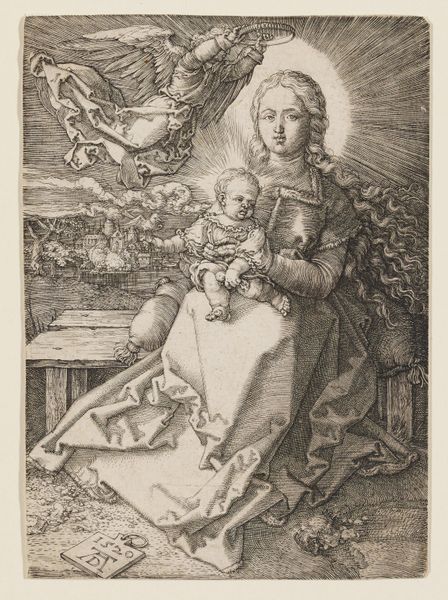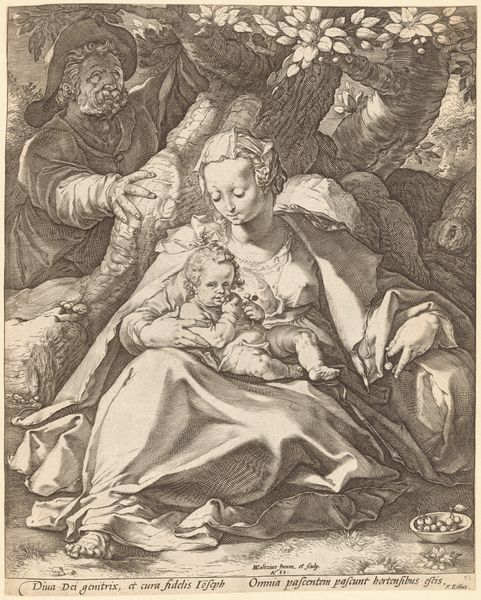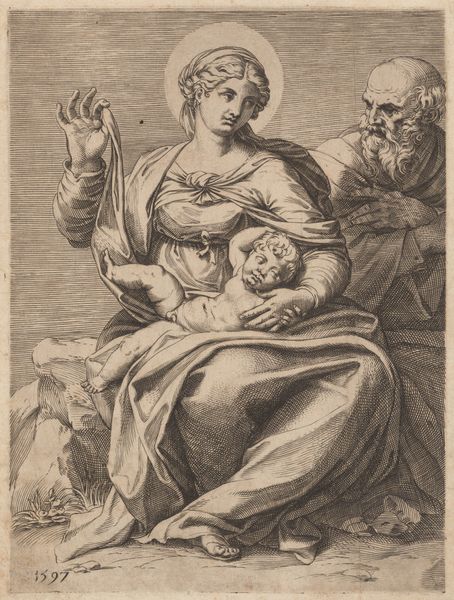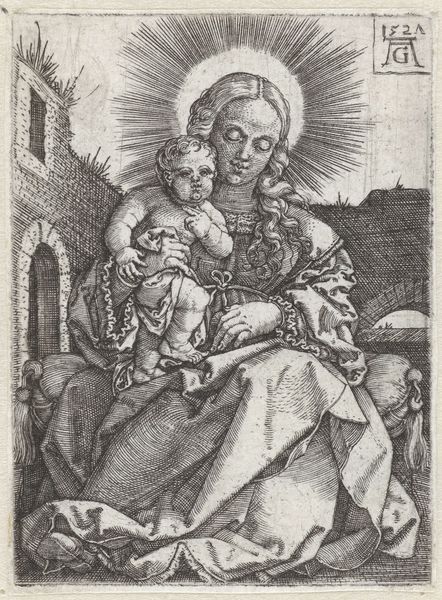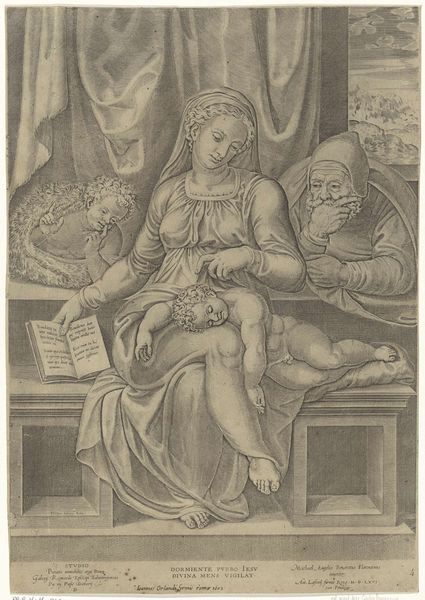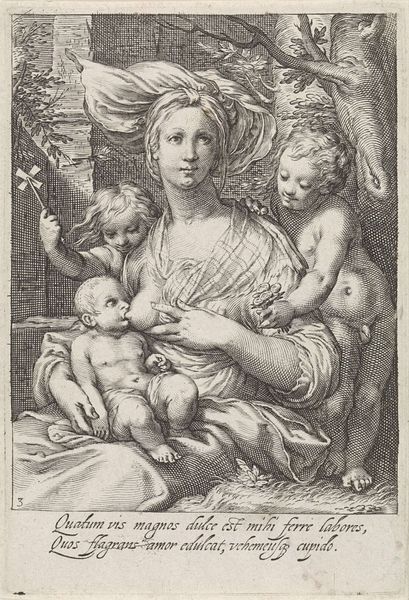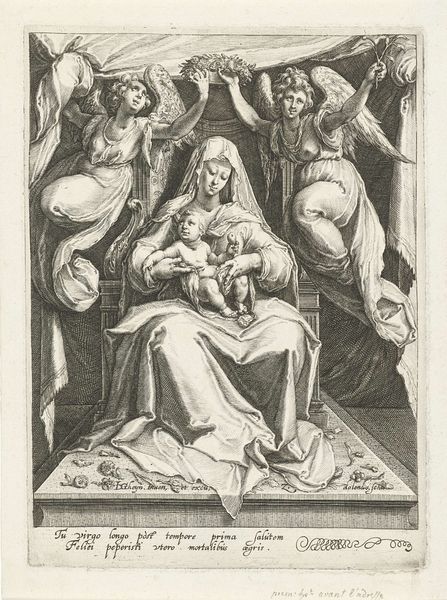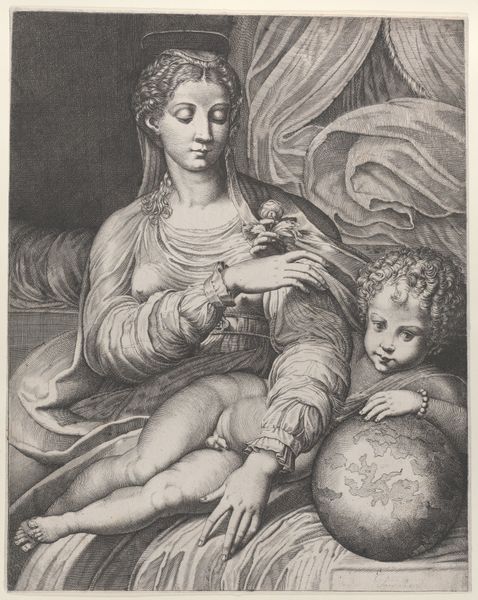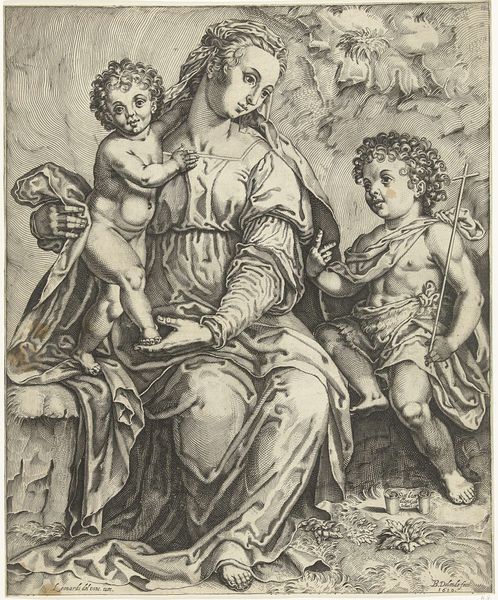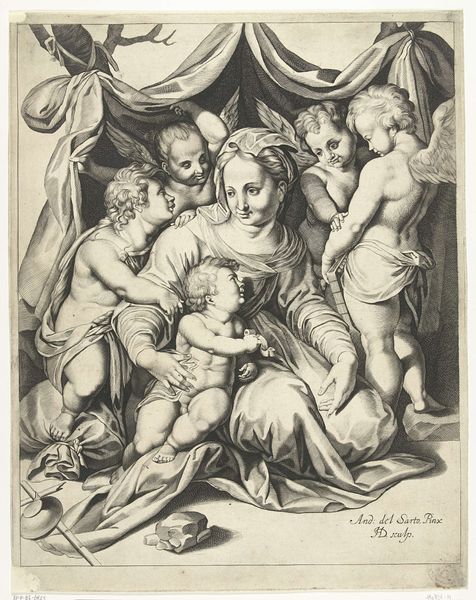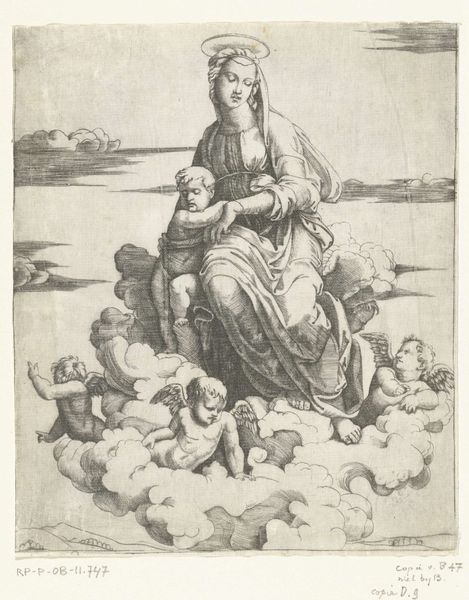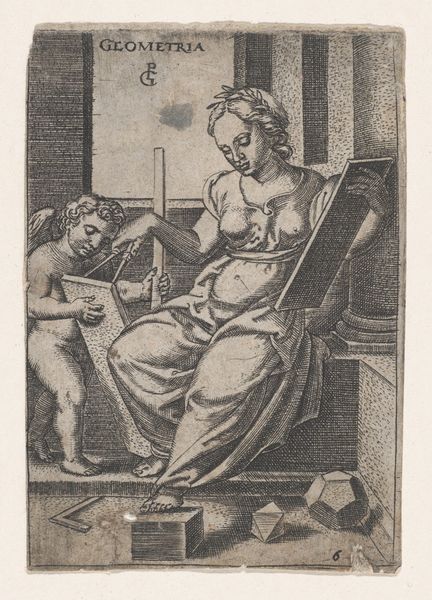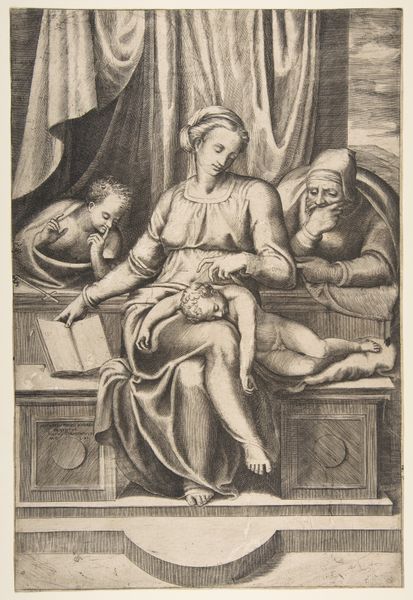
print, engraving
# print
#
figuration
#
history-painting
#
northern-renaissance
#
engraving
Dimensions: height 182 mm, width 128 mm
Copyright: Rijks Museum: Open Domain
Curator: Welcome. Today we’re observing Jacob Binck’s engraving, “Maria met kind en Jozef,” which dates from between 1510 and 1569. It is part of the Rijksmuseum’s collection. Editor: It has such an overwhelming stillness. Mary’s expression is somber, almost melancholic, despite the bright halo and cherubs. It’s quite compelling, this emotional ambiguity. Curator: The engraving masterfully captures a complex interplay of motifs and Northern Renaissance ideals. We see the Virgin Mary, Christ as a young child, Joseph, and even a younger John the Baptist alongside Mary’s parents in the background. Apples are being offered to baby Jesus by Mary. The fruit symbolizes salvation, of course. Editor: It also symbolizes original sin; the dual symbolism makes for a charged moment. I'm curious how Binck uses the family to explore anxieties around gender roles and societal expectations placed on women and mothers, particularly through a religious lens. Curator: Look at Mary's elaborate hair, seemingly unbound and flowing behind her. Her cascading waves, the halo…the associations with earthly beauty alongside purity are complex, aren’t they? And the other child gestures towards what may be John the Baptist carrying the standard associated with his later recognition of Jesus. This imagery speaks to prophecy. Editor: I am struck, though, by Joseph's marginalized presence here. He is relegated to the edge of the image, almost an afterthought. Is Binck commenting on Joseph’s social and domestic role within the holy family? The marginalization almost highlights a wider discourse around male authority within religious narratives. Curator: Perhaps, but Binck also portrays him as a protective figure, subtly watching over Mary and Jesus. He also may serve as a grounded counterpoint to the celestial elements, such as the halo, to add an earthly dimension to this religious scene. Binck may not be challenging established structures, as he may be reinforcing them by illustrating familial roles. Editor: Fair. Yet even his quiet watchfulness seems fraught. It raises important questions around visibility, agency, and the subtle power dynamics present, particularly considering Mary is holding an apple. Curator: Such an artwork shows that even centuries later, art still challenges us to interpret and debate across our own evolving experiences. Editor: Indeed. It reminds us how critical visual analysis can be, for making the past more legible to our present.
Comments
No comments
Be the first to comment and join the conversation on the ultimate creative platform.
